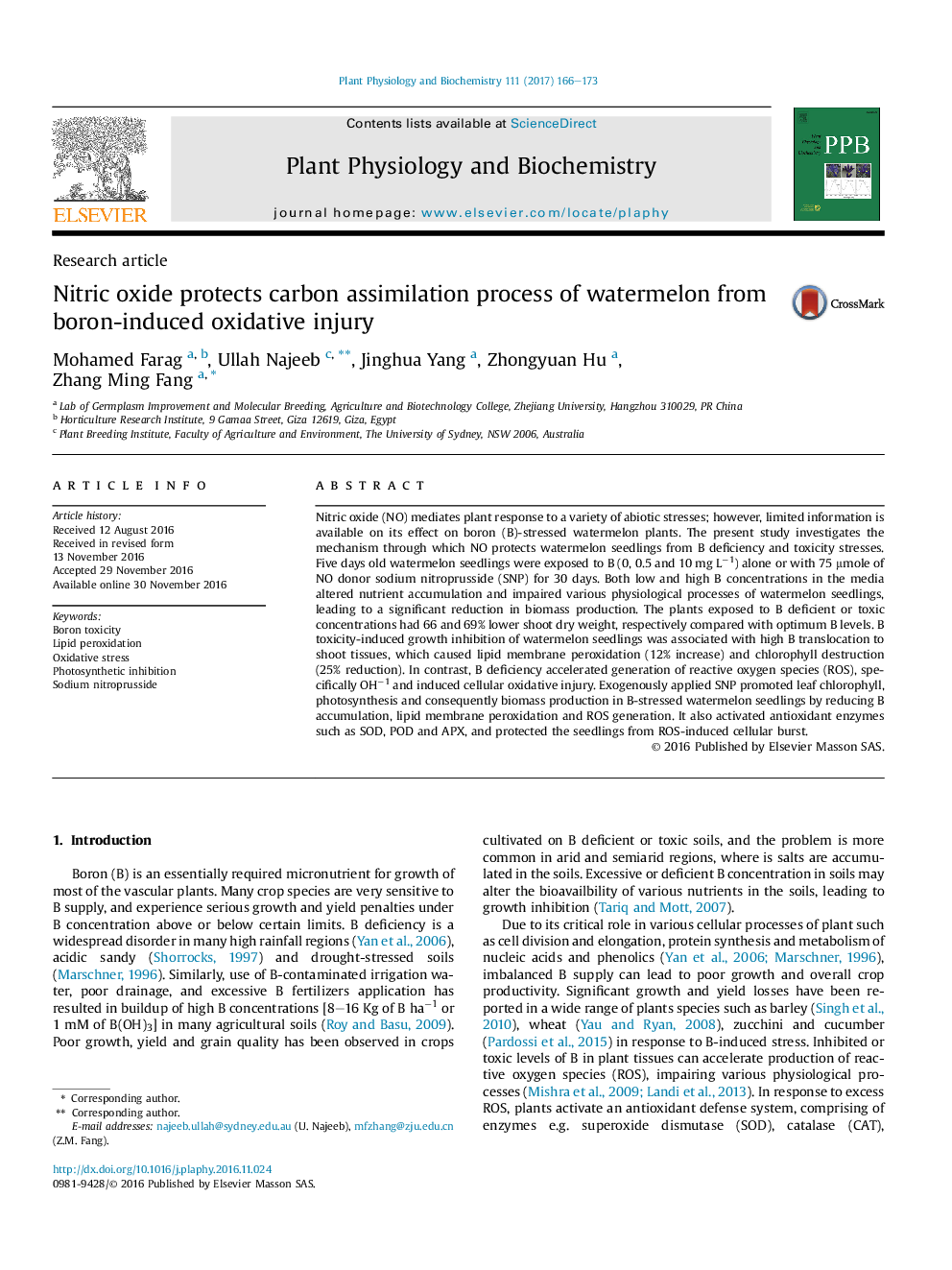| Article ID | Journal | Published Year | Pages | File Type |
|---|---|---|---|---|
| 5515541 | Plant Physiology and Biochemistry | 2017 | 8 Pages |
â¢Watermelon plants are highly responsive to high or low B supply in the growth media.â¢B toxicity or deficiency impairs photo-assimilation process in watermelon leaves.â¢Sodium nitroprusside (NO donor) protects watermelon seedlings from B-induced injury.
Nitric oxide (NO) mediates plant response to a variety of abiotic stresses; however, limited information is available on its effect on boron (B)-stressed watermelon plants. The present study investigates the mechanism through which NO protects watermelon seedlings from B deficiency and toxicity stresses. Five days old watermelon seedlings were exposed to B (0, 0.5 and 10 mg Lâ1) alone or with 75 μmole of NO donor sodium nitroprusside (SNP) for 30 days. Both low and high B concentrations in the media altered nutrient accumulation and impaired various physiological processes of watermelon seedlings, leading to a significant reduction in biomass production. The plants exposed to B deficient or toxic concentrations had 66 and 69% lower shoot dry weight, respectively compared with optimum B levels. B toxicity-induced growth inhibition of watermelon seedlings was associated with high B translocation to shoot tissues, which caused lipid membrane peroxidation (12% increase) and chlorophyll destruction (25% reduction). In contrast, B deficiency accelerated generation of reactive oxygen species (ROS), specifically OHâ1 and induced cellular oxidative injury. Exogenously applied SNP promoted leaf chlorophyll, photosynthesis and consequently biomass production in B-stressed watermelon seedlings by reducing B accumulation, lipid membrane peroxidation and ROS generation. It also activated antioxidant enzymes such as SOD, POD and APX, and protected the seedlings from ROS-induced cellular burst.
